You are using an out of date browser. It may not display this or other websites correctly.
You should upgrade or use an alternative browser.
You should upgrade or use an alternative browser.
FDNY and NYC Firehouses and Fire Companies
- Thread starter mack
- Start date
- Status
- Not open for further replies.
Engine 163/Ladder 83 Firehouse 875 Jewett Avenue Westerleigh, Staten Island Division 8, Battalion 22
Engine 163 organized 875 Jewett Avenue w/Ladder 83 1932
Ladder 83 organized 875 Jewett Avenue w/Engine 163 1932
Thawing Unit 3 located at 875 Jewett Avenue at Engine 163 1957-1963, 1983-1987
Purple K Unit 163 organized 875 Jewett Avenue at Engine 163 2007
875 Jewett Avenue firehouse:

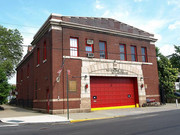


Engine 163:






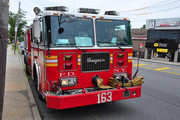

Ladder 83:



Purple K Unit 163:

Engine 163/Ladder 83 Auxiliaries World War II:

Engine 163/Ladder 83 videos:
https://www.youtube.com/watch?v=L-fQ2oBSuCI
https://www.youtube.com/watch?v=oOGrWJpJLUw
Engine 163 FDNY Medal:
FF Edward R Fanuzzi, Engine 163, September 3, 1963 1964 Hugh Bonner Medal
LT Louis C Ambio, Engine 163, March 3, 1986 1987 DeFranco Medal
Engine 163 LODD:
FF Michael Gurumba, Engine 163, heart attack at fire, August 28, 2001

http://www.nydailynews.com/archives/news/rookie-fireman-27-dies-collapses-battling-s-fire-5th-perish-job-year-article-1.928985
http://www.nytimes.com/2001/08/29/nyregion/heart-attack-kills-new-firefighter-during-a-blaze-on-staten-island.html
RIP. Never forget.
Volunteer history: Engine 163 and Ladder 83 replaced volunteer company Defender Hook & Ladder 7, located at 1721 Victory Blvd Castleton Corners, Staten Island
Defender H&L 7 organized at 1721 Victory Blvd 1899
Defender H&L 7 disbanded 1932
Notes: - Victory Blvd originally called Richmond Turnpike.
- Nearest engine or hose company was 2 1/2 miles away
- H&L company also purchased hose cart
- Operated as ladder and hose company using hydrant pressure until engine arrived
- Disbanded when FDNY Engine 163 and Ladder 83 were organized in 1932 in Westerleigh
Members in front of firehouse 1721 Victory Blvd:

1721 Victory Blvd firehouse:

1721 Victory Blvd firehouse 1916:

Westerleigh, Staten Island:
https://en.wikipedia.org/wiki/Westerleigh,_Staten_Island
http://forgotten-ny.com/2000/06/westerleigh-staten-island/
https://www.nytimes.com/2014/04/13/realestate/westerleigh-si-built-on-temperance.html


Engine 163 organized 875 Jewett Avenue w/Ladder 83 1932
Ladder 83 organized 875 Jewett Avenue w/Engine 163 1932
Thawing Unit 3 located at 875 Jewett Avenue at Engine 163 1957-1963, 1983-1987
Purple K Unit 163 organized 875 Jewett Avenue at Engine 163 2007
875 Jewett Avenue firehouse:




Engine 163:








Ladder 83:



Purple K Unit 163:

Engine 163/Ladder 83 Auxiliaries World War II:

Engine 163/Ladder 83 videos:
https://www.youtube.com/watch?v=L-fQ2oBSuCI
https://www.youtube.com/watch?v=oOGrWJpJLUw
Engine 163 FDNY Medal:
FF Edward R Fanuzzi, Engine 163, September 3, 1963 1964 Hugh Bonner Medal
LT Louis C Ambio, Engine 163, March 3, 1986 1987 DeFranco Medal
Engine 163 LODD:
FF Michael Gurumba, Engine 163, heart attack at fire, August 28, 2001

http://www.nydailynews.com/archives/news/rookie-fireman-27-dies-collapses-battling-s-fire-5th-perish-job-year-article-1.928985
http://www.nytimes.com/2001/08/29/nyregion/heart-attack-kills-new-firefighter-during-a-blaze-on-staten-island.html
RIP. Never forget.
Volunteer history: Engine 163 and Ladder 83 replaced volunteer company Defender Hook & Ladder 7, located at 1721 Victory Blvd Castleton Corners, Staten Island
Defender H&L 7 organized at 1721 Victory Blvd 1899
Defender H&L 7 disbanded 1932
Notes: - Victory Blvd originally called Richmond Turnpike.
- Nearest engine or hose company was 2 1/2 miles away
- H&L company also purchased hose cart
- Operated as ladder and hose company using hydrant pressure until engine arrived
- Disbanded when FDNY Engine 163 and Ladder 83 were organized in 1932 in Westerleigh
Members in front of firehouse 1721 Victory Blvd:

1721 Victory Blvd firehouse:

1721 Victory Blvd firehouse 1916:

Westerleigh, Staten Island:
https://en.wikipedia.org/wiki/Westerleigh,_Staten_Island
http://forgotten-ny.com/2000/06/westerleigh-staten-island/
https://www.nytimes.com/2014/04/13/realestate/westerleigh-si-built-on-temperance.html


Engine 27 Firehouse 173 Franklin Street Tribeca, Manhattan Division 1 Battalion 5 DISBANDED
Engine 27 organized 173 Franklin Street former volunteer firehouse 1865
Engine 27 moved 304 Washington Street former quarters Engine 29 1881
Engine 27 new firehouse 173 Franklin Street 1882
Engine 27 disbanded (July 2) 1975
Engine 27 reorganized 173 Franklin Street (July 4) 1975
Engine 27 disbanded (November 22) 1975
Engine 27-2 organized 173 Franklin Street at Engine 27 1884
Engine 27 disbanded (May 24) 1893
Engine 27 reorganized 173 Franklin Street (September 29) 1893
Engine 27 disbanded (January 15) 1921
Tank Wagon 1 organized 173 Franklin Street at Engine 27 1884
Tank Wagon 1 moved to 243 Lafayette Street at Engine 20 Unknown Date
Volunteer history 1804-1865:
Engine 30 Tompkins organized unknown location 1804
Engine 30 Tompkins new firehouse Rivington Street near Forsyth Street 1813
Engine 30 Tompkins new firehouse 199 Chrystie Street 1830
Engine 30 Tompkins new firehouse E 22nd Street near 2nd Avenue 1847
Engine 30 North River new firehouse 153 Franklin Street 1858
Engine 30 North River new firehouse 173 Franklin Street 1864
Engine 30 North River disbanded Engine 27 FDNY organized 173 Franklin St 1865
?No. 30. -- Tompkins. -- This, the first company of that name and number, was organized in 1804, and in 1813 was located in Rivington Street, between Forsyth (then Second) and Eldridge (then Third) Streets, and in 1830 moved to 199 Chrystie Street near Stanton, the same location that Lafayette engine Company 19 used in later years. The greatest rivals of 30 Engine Company were Engine Companies 15, 40 and 37. No. 44 Engine Company was also a rival of 30 Engine, and during a race in 1841 the companies became seriously engaged, and charges were preferred against both companies. John P. Teale, a ship carpenter, was foreman and he called the company together, and tendered his resignation as an officer and also as a member of the company. The members were taken by surprise and asked the reason why. Teale said the company could not bear the blame of all the disasters, and the members thereupon sustained their foreman and resigned as a body with the exception of Mr. John Boyd. He was for retaining the organization and fighting down all opposition. He was, however, prevailed on to go with the rest, and the engine was left without members. The trial went on before the Fire and Water Committee, and Frederick R. lee, alderman of the Seventeenth Ward, well known as the foreman of old No. 3 Engine, was the chairman of the committee. No. 30 Engine Company was exonerated, and the blame placed principally on 44 Engine Company. Alderman Lee waited on Mr. Teale, and endeavored to get the company to resume duty but in vain. The engine was taken out of the house and given to Engine Company 20, and the doors of the house locked up on October 6, 1841. William Rainier, afterwards of Engine Company 40 and Engine Company 31, and William lamb, afterwards of Engine Company 25 and an assistant engineer from 1862 to 1865, were members at the time of disbandment, as was James R. Mount, afterwards of Atlantic Hose Company 14.?
- ?Our Firemen, the History of the NY Fire Departments?
?North River Engine Company 30, B.F. Grant, Foreman, made a very fine appearance. Their engine, which is second class, was painted, the box a dark red, the wheels a dark blue, the whole heavily gilded. On each side of the engine is painted on the panels, ?North River 30?. They paraded about 50 men.?
- ?The Story of the Volunteer Fire Department of the City of New York?
173 Franklin Street firehouse:

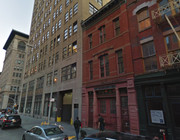


Engine 27 1894:

Engine 27/Engine 27-2 1905:
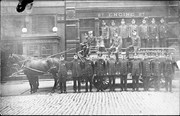



Engine 27 1938 Ahrens Fox pumper:

Engine 27 1940 Mack hose wagon:


Engine 27 1954 Mack pumper:
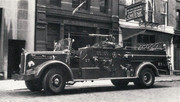
Tank Wagon 1 1880s:

- Note: Tank Wagon Unit responded to fireboat, ran line to fill water tank, steamers used water supply from water tank to fight fire
Engine 27 fires:
Engine 27 working at fire with Fire Patrol:

Engine 27 2nd alarm factory fire - 10 members overcome by smoke March 27, 1904:

Engine 27 factory fire - 5 members overcome by smoke June 29, 1904:

Engine 27 early 1900s:

Engine 27 FDNY Medals:
Captain Arnot M. Spence, Engine 27, 1884 Stephenson Medal

FF James M. Simonette, Engine 27, July 18, 1921 Crimmins Medal
Captain Thomas J. O'Toole, Engine 27, January 20, 1924 James Gordon Bennett Medal

Engine 27 LODD:
FF James H. Shute, Engine 27, August 23, 1891 Died advancing line into factory fire.
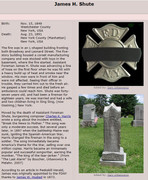
RIP. Never forget.
Histories of Engine 27:
http://tribecacitizen.com/the-history-of-tribeca-buildings/173-franklin/
http://daytoninmanhattan.blogspot.com/2016/09/engine-company-27-no-173-franklin-street.html
Tribeca
https://en.wikipedia.org/wiki/Tribeca
Engine 27 organized 173 Franklin Street former volunteer firehouse 1865
Engine 27 moved 304 Washington Street former quarters Engine 29 1881
Engine 27 new firehouse 173 Franklin Street 1882
Engine 27 disbanded (July 2) 1975
Engine 27 reorganized 173 Franklin Street (July 4) 1975
Engine 27 disbanded (November 22) 1975
Engine 27-2 organized 173 Franklin Street at Engine 27 1884
Engine 27 disbanded (May 24) 1893
Engine 27 reorganized 173 Franklin Street (September 29) 1893
Engine 27 disbanded (January 15) 1921
Tank Wagon 1 organized 173 Franklin Street at Engine 27 1884
Tank Wagon 1 moved to 243 Lafayette Street at Engine 20 Unknown Date
Volunteer history 1804-1865:
Engine 30 Tompkins organized unknown location 1804
Engine 30 Tompkins new firehouse Rivington Street near Forsyth Street 1813
Engine 30 Tompkins new firehouse 199 Chrystie Street 1830
Engine 30 Tompkins new firehouse E 22nd Street near 2nd Avenue 1847
Engine 30 North River new firehouse 153 Franklin Street 1858
Engine 30 North River new firehouse 173 Franklin Street 1864
Engine 30 North River disbanded Engine 27 FDNY organized 173 Franklin St 1865
?No. 30. -- Tompkins. -- This, the first company of that name and number, was organized in 1804, and in 1813 was located in Rivington Street, between Forsyth (then Second) and Eldridge (then Third) Streets, and in 1830 moved to 199 Chrystie Street near Stanton, the same location that Lafayette engine Company 19 used in later years. The greatest rivals of 30 Engine Company were Engine Companies 15, 40 and 37. No. 44 Engine Company was also a rival of 30 Engine, and during a race in 1841 the companies became seriously engaged, and charges were preferred against both companies. John P. Teale, a ship carpenter, was foreman and he called the company together, and tendered his resignation as an officer and also as a member of the company. The members were taken by surprise and asked the reason why. Teale said the company could not bear the blame of all the disasters, and the members thereupon sustained their foreman and resigned as a body with the exception of Mr. John Boyd. He was for retaining the organization and fighting down all opposition. He was, however, prevailed on to go with the rest, and the engine was left without members. The trial went on before the Fire and Water Committee, and Frederick R. lee, alderman of the Seventeenth Ward, well known as the foreman of old No. 3 Engine, was the chairman of the committee. No. 30 Engine Company was exonerated, and the blame placed principally on 44 Engine Company. Alderman Lee waited on Mr. Teale, and endeavored to get the company to resume duty but in vain. The engine was taken out of the house and given to Engine Company 20, and the doors of the house locked up on October 6, 1841. William Rainier, afterwards of Engine Company 40 and Engine Company 31, and William lamb, afterwards of Engine Company 25 and an assistant engineer from 1862 to 1865, were members at the time of disbandment, as was James R. Mount, afterwards of Atlantic Hose Company 14.?
- ?Our Firemen, the History of the NY Fire Departments?
?North River Engine Company 30, B.F. Grant, Foreman, made a very fine appearance. Their engine, which is second class, was painted, the box a dark red, the wheels a dark blue, the whole heavily gilded. On each side of the engine is painted on the panels, ?North River 30?. They paraded about 50 men.?
- ?The Story of the Volunteer Fire Department of the City of New York?
173 Franklin Street firehouse:




Engine 27 1894:

Engine 27/Engine 27-2 1905:




Engine 27 1938 Ahrens Fox pumper:

Engine 27 1940 Mack hose wagon:


Engine 27 1954 Mack pumper:

Tank Wagon 1 1880s:

- Note: Tank Wagon Unit responded to fireboat, ran line to fill water tank, steamers used water supply from water tank to fight fire
Engine 27 fires:
Engine 27 working at fire with Fire Patrol:

Engine 27 2nd alarm factory fire - 10 members overcome by smoke March 27, 1904:

Engine 27 factory fire - 5 members overcome by smoke June 29, 1904:

Engine 27 early 1900s:

Engine 27 FDNY Medals:
Captain Arnot M. Spence, Engine 27, 1884 Stephenson Medal

FF James M. Simonette, Engine 27, July 18, 1921 Crimmins Medal
Captain Thomas J. O'Toole, Engine 27, January 20, 1924 James Gordon Bennett Medal

Engine 27 LODD:
FF James H. Shute, Engine 27, August 23, 1891 Died advancing line into factory fire.

RIP. Never forget.
Histories of Engine 27:
http://tribecacitizen.com/the-history-of-tribeca-buildings/173-franklin/
http://daytoninmanhattan.blogspot.com/2016/09/engine-company-27-no-173-franklin-street.html
Tribeca
https://en.wikipedia.org/wiki/Tribeca
- Joined
- Sep 25, 2013
- Messages
- 995
Engine 27 was part of the 2nd Battalion when disbanded although they had been in the 5th Battalion for many years.mack said:Engine 27 Firehouse 173 Franklin Street Tribeca, Manhattan Division 1 Battalion 5 DISBANDED
Engine 27-2 organized 173 Franklin Street at Engine 27 1884
Engine 27 disbanded (May 24) 1893
Engine 27 reorganized 173 Franklin Street (September 29) 1893
Engine 27 disbanded (January 15) 1921
Tank Wagon 1 organized 173 Franklin Street at Engine 27 1884
Tank Wagon 1 moved to 243 Lafayette Street at Engine 20 Unknown Date
Engine 27-2 was disbanded on January 15, 1921 and Engine 301 was established on that day.
Tank Wagon 1 was moved to a firehouse in the 4th Battalion (Engines 9, 11, 15, 17, Ladders 6, 9) in 1894 before it was disbanded at a later date.
Engine 27 was disbanded November 22, 1975 during a period of financial crisis for NYC - the 1970s - even though the FDNY War Years work load was continuing to increase and neighborhoods were being incinerated.
History - Companies disbanded in the 1970s:
1970: M 7, M 8
1971: M 4,
1972: E 2, E 31, E 32, E 208, E 215, E 267, E 88-2, L 27-2, E 217-2, Sq 6
1974: E 13, E 203, E 256, E 272, E 50-2, E 91-2, L 26-2, L 103-2, Bn 5
1975: E 27, E 154, E 167, E 205, E 212, E 218, E 232, E 269, E 306, L 8, L 171, Bn 29, Bn 60, Dv 16, Dv 17
1976: M 5
- Some companies were re-organized, most were not.
FDNY Statistics - 1960 to 2015:
Year Uniform Force Fires Emergs MFA's Total Alarms Serious Fires Civilian Deaths
1960 11,766 60,941 16,868 16,326 94,135 1,630 207
1961 11,578 61,644 17,509 18,530 97,683 1,696 166
1962 12,301 69,991 18,719 20,279 108,989 2,064 153
1963 12,817 74,680 20,836 21,961 117,477 1,912 175
1964 12,953 79,477 22,173 26,759 128,409 1,606 180
1965 13,288 85,592 24,305 32,814 142,711 1,905 196
1966 13,231 90,290 27,084 37,414 154,788 2,135 243
1967 13,059 91,161 33,231 48,106 172,498 2,275 218
1968 13,764 127,826 39,249 60,945 228,020 3,156 302
1969 14,031 126,204 41,054 72,060 239,318 3,312 307
1970 14,325 127,249 45,999 89,432 263,659 3,508 310
1971 13,896 125,306 49,543 104,958 279,807 3,573 292
1972 13,558 118,297 49,610 106,878 274,785 3,410 270 RAND Study, Firehouse closures
1973 13,394 129,106 55,247 115,802 300,155 3,261 295 FDNY strike
1974 13,091 130,324 59,733 164,401 353,458 3,852 273 Firehouse closures, FDNY layoffs
1975 11,548 137,478 59,478 203,851 400,096 4,307 245 Firehouse closures, 40K NYC lay offs
1976 10,662 153,263 64,524 207,227 425,014 4,880 289 Closures
1977 11,271 129,619 66,950 262,998 459,567 4,640 290
1978 10,979 210,792 66,323 285,290 472,405 3,445 272
1979 11,466 114,370 72,243 162,529 349,142 3,095 244
1980 11,252 127,876 76,327 185,500 389,703 3,303 289
1981 11,720 122,261 75,653 164,118 362,032 3,090 246
1982 11,990 111,799 77,132 152,147 341,078 2,782 248
1983 11,908 96,276 76,772 139,083 312,131 2,320 228
1984 12,096 94,329 78,769 142,224 315,322 2,148 206
1985 12,080 97,454 81,553 132,522 311,529 2,240 213
1986 12,202 94,157 81,848 128,793 304,798 2,126 206
1987 11,943 89,751 93,557 140,957 324,205 2,134 245
1988 11,433 105,229 99,175 139,408 343,812 2,775 229
1989 10,630 95,126 114,168 136,862 346,156 3,187 246
1975 NYC Financial Crisis:
"New Yorkers continue to debate what drove the city to the brink of bankruptcy in 1975. Some argue that New York City?s liberal officials borrowed money freely to spend on social programs, while powerful municipal unions forced them to agree to obscenely generous contracts. Others say that a variety of outside factors were a driving factor -- the city was increasingly tied into a world economy that was in shock from the 1973 Arab oil embargo; it was victimized by the banks upon which it relied to buy bonds; the federal government left the city in the lurch...
"The banks had lent too much and checked too little; the unions took more than the city could afford; the city cooked the books, and borrowed; and the state encouraged this whole exercise,"...
Whether or not they were the root cause of the crisis, New York City?s financial practices were out of control at that time, say experts. The city was relying excessively on debt; ... its short-term debt had risen from about zero in 1970 to $6 billion in 1975. The city relied increasingly on budgetary tricks to balance the budget?- reclassifying operating expenses as capital investments; continuously pushing expenditures onto the following year?s budget; or simply not keeping good enough records to know what was really going on.
... "The Streets Were Paved With Gold"- one of numerous books written on the topic -... the city acted as if it wasn?t bleeding to death when in fact it was hemorrhaging severely. But when first the banks, and then the federal government, declined to bail the city out (the latter prompting one of the most famous tabloid headlines in New York history: "FORD TO CITY: DROP DEAD"), it became apparent that something needed to be done.
The answer ... was ?fiscal martial law.?" - http://www.gothamgazette.com/economy/3016-the-fiscal-crisis-after-30-years
Results: In November 1975 Mayor Abraham Beame presented a deep cut of another $200 million from the NYC budget to the Emergency Financial Control Board, which had taken control of the city's finances. 40,000 NYC employees were laid off. NYPD and FDNY had massive layoffs and firehouses were closed. Sanitation workers conducted crippling garbage-collection strike. Cuts were desperate measures to keep New York City fiscally afloat after inept mayors and poor leadership destroyed BYC financial solvency.
Rand Study:
Computer experts of the RAND Institute were hired by the administration of Mayor John V. Lindsay to make FDNY more efficient. The RAND Study, based primarily on theoretical response times, were used to justify deep FDNY cuts and firehouse closures.
Engine 27, and many other FDNY companies, were eliminated when their services might have saved lives and neighborhoods.
Gone but not forgotten.
History - Companies disbanded in the 1970s:
1970: M 7, M 8
1971: M 4,
1972: E 2, E 31, E 32, E 208, E 215, E 267, E 88-2, L 27-2, E 217-2, Sq 6
1974: E 13, E 203, E 256, E 272, E 50-2, E 91-2, L 26-2, L 103-2, Bn 5
1975: E 27, E 154, E 167, E 205, E 212, E 218, E 232, E 269, E 306, L 8, L 171, Bn 29, Bn 60, Dv 16, Dv 17
1976: M 5
- Some companies were re-organized, most were not.
FDNY Statistics - 1960 to 2015:
Year Uniform Force Fires Emergs MFA's Total Alarms Serious Fires Civilian Deaths
1960 11,766 60,941 16,868 16,326 94,135 1,630 207
1961 11,578 61,644 17,509 18,530 97,683 1,696 166
1962 12,301 69,991 18,719 20,279 108,989 2,064 153
1963 12,817 74,680 20,836 21,961 117,477 1,912 175
1964 12,953 79,477 22,173 26,759 128,409 1,606 180
1965 13,288 85,592 24,305 32,814 142,711 1,905 196
1966 13,231 90,290 27,084 37,414 154,788 2,135 243
1967 13,059 91,161 33,231 48,106 172,498 2,275 218
1968 13,764 127,826 39,249 60,945 228,020 3,156 302
1969 14,031 126,204 41,054 72,060 239,318 3,312 307
1970 14,325 127,249 45,999 89,432 263,659 3,508 310
1971 13,896 125,306 49,543 104,958 279,807 3,573 292
1972 13,558 118,297 49,610 106,878 274,785 3,410 270 RAND Study, Firehouse closures
1973 13,394 129,106 55,247 115,802 300,155 3,261 295 FDNY strike
1974 13,091 130,324 59,733 164,401 353,458 3,852 273 Firehouse closures, FDNY layoffs
1975 11,548 137,478 59,478 203,851 400,096 4,307 245 Firehouse closures, 40K NYC lay offs
1976 10,662 153,263 64,524 207,227 425,014 4,880 289 Closures
1977 11,271 129,619 66,950 262,998 459,567 4,640 290
1978 10,979 210,792 66,323 285,290 472,405 3,445 272
1979 11,466 114,370 72,243 162,529 349,142 3,095 244
1980 11,252 127,876 76,327 185,500 389,703 3,303 289
1981 11,720 122,261 75,653 164,118 362,032 3,090 246
1982 11,990 111,799 77,132 152,147 341,078 2,782 248
1983 11,908 96,276 76,772 139,083 312,131 2,320 228
1984 12,096 94,329 78,769 142,224 315,322 2,148 206
1985 12,080 97,454 81,553 132,522 311,529 2,240 213
1986 12,202 94,157 81,848 128,793 304,798 2,126 206
1987 11,943 89,751 93,557 140,957 324,205 2,134 245
1988 11,433 105,229 99,175 139,408 343,812 2,775 229
1989 10,630 95,126 114,168 136,862 346,156 3,187 246
1975 NYC Financial Crisis:
"New Yorkers continue to debate what drove the city to the brink of bankruptcy in 1975. Some argue that New York City?s liberal officials borrowed money freely to spend on social programs, while powerful municipal unions forced them to agree to obscenely generous contracts. Others say that a variety of outside factors were a driving factor -- the city was increasingly tied into a world economy that was in shock from the 1973 Arab oil embargo; it was victimized by the banks upon which it relied to buy bonds; the federal government left the city in the lurch...
"The banks had lent too much and checked too little; the unions took more than the city could afford; the city cooked the books, and borrowed; and the state encouraged this whole exercise,"...
Whether or not they were the root cause of the crisis, New York City?s financial practices were out of control at that time, say experts. The city was relying excessively on debt; ... its short-term debt had risen from about zero in 1970 to $6 billion in 1975. The city relied increasingly on budgetary tricks to balance the budget?- reclassifying operating expenses as capital investments; continuously pushing expenditures onto the following year?s budget; or simply not keeping good enough records to know what was really going on.
... "The Streets Were Paved With Gold"- one of numerous books written on the topic -... the city acted as if it wasn?t bleeding to death when in fact it was hemorrhaging severely. But when first the banks, and then the federal government, declined to bail the city out (the latter prompting one of the most famous tabloid headlines in New York history: "FORD TO CITY: DROP DEAD"), it became apparent that something needed to be done.
The answer ... was ?fiscal martial law.?" - http://www.gothamgazette.com/economy/3016-the-fiscal-crisis-after-30-years
Results: In November 1975 Mayor Abraham Beame presented a deep cut of another $200 million from the NYC budget to the Emergency Financial Control Board, which had taken control of the city's finances. 40,000 NYC employees were laid off. NYPD and FDNY had massive layoffs and firehouses were closed. Sanitation workers conducted crippling garbage-collection strike. Cuts were desperate measures to keep New York City fiscally afloat after inept mayors and poor leadership destroyed BYC financial solvency.
Rand Study:
Computer experts of the RAND Institute were hired by the administration of Mayor John V. Lindsay to make FDNY more efficient. The RAND Study, based primarily on theoretical response times, were used to justify deep FDNY cuts and firehouse closures.
Engine 27, and many other FDNY companies, were eliminated when their services might have saved lives and neighborhoods.
Gone but not forgotten.
- Joined
- Aug 29, 2008
- Messages
- 2,487
I have often wondered why E296 was closed in 1960. College Point, Queens was a somewhat isolated area, however it did contain a heavy industrial community as well as many many balloon construction frame private dwellings. Access to College Point was only four roads, i.e. 14th avenue, Linden Place & 20th avenue and the College Point Causeway as it was called. It's now known as College Point Blvd. Anyway, after major rainstorms
Linden Place, the Causeway and 20th Avenue were all impassable due to flooding as they all were swamp lands. With 296 gone, 272 (RIP) had a hell of a time getting up to the Point as a 2nd and 3rd due engine on various boxes and 295 had only the option of 14th avenue under flooding conditions. Granted 297 & 130 were only doing about 300 runs per year then but when the "big one" hit they would be alone for quite a while. Then too, 296's quarters were about as old and rundown as a long vacated building. Just wondered all these years and I know I'll never know the answer.
Linden Place, the Causeway and 20th Avenue were all impassable due to flooding as they all were swamp lands. With 296 gone, 272 (RIP) had a hell of a time getting up to the Point as a 2nd and 3rd due engine on various boxes and 295 had only the option of 14th avenue under flooding conditions. Granted 297 & 130 were only doing about 300 runs per year then but when the "big one" hit they would be alone for quite a while. Then too, 296's quarters were about as old and rundown as a long vacated building. Just wondered all these years and I know I'll never know the answer.
I worked there a few times and found it a great place.enginecap said:Spent my first year on the job there.....sheer torture
- Joined
- Apr 13, 2012
- Messages
- 9,732
I'm curious why?enginecap said:Spent my first year on the job there.....sheer torture
- Joined
- Sep 25, 2013
- Messages
- 995
No answer as to why E296 was disbanded but the firehouse was over 100 years old (1854). Squad 9 was organized a short time later in Manhattan.memory master said:I have often wondered why E296 was closed in 1960. College Point, Queens was a somewhat isolated area, however it did contain a heavy industrial community as well as many many balloon construction frame private dwellings. Access to College Point was only four roads, i.e. 14th avenue, Linden Place & 20th avenue and the College Point Causeway as it was called. It's now known as College Point Blvd. Anyway, after major rainstorms
Linden Place, the Causeway and 20th Avenue were all impassable due to flooding as they all were swamp lands. With 296 gone, 272 (RIP) had a hell of a time getting up to the Point as a 2nd and 3rd due engine on various boxes and 295 had only the option of 14th avenue under flooding conditions. Granted 297 & 130 were only doing about 300 runs per year then but when the "big one" hit they would be alone for quite a while. Then too, 296's quarters were about as old and rundown as a long vacated building. Just wondered all these years and I know I'll never know the answer.
- Joined
- Sep 25, 2013
- Messages
- 995
mack said:History - Companies disbanded in the 1970s:
1970: M 7, M 8
1971: M 4,
1972: E 2, E 31, E 32, E 208, E 215, E 267, E 88-2, L 27-2, E 217-2, Sq 6
1974: E 13, E 203, E 256, E 272, E 50-2, E 91-2, L 26-2, L 103-2, Bn 5
1975: E 27, E 154, E 167, E 205, E 212, E 218, E 232, E 269, E 306, L 8, L 171, Bn 29, Bn 60, Dv 16, Dv 17
1976: M 5
- Some companies were re-organized, most were not.
Engine 27, and many other FDNY companies, were eliminated when their services might have saved lives and neighborhoods.
Gone but not forgotten.
Some companies were also closed to organize new companies.
Here are a few more companies that were closed (particularly from July 2 to July 4 1975). Most were reorganized, although a few were disbanded again and reorganized again later.
1972: E 2, E 31, E 32, E 208, E 215, E 267, E 88-2, L 27-2, E 217-2, Sq 6, (also E233-2)
1974: E 13, E 203, E 256, E 272, E 50-2, E 91-2, L 26-2, L 103-2, Bn 5 (also E41-2, E70, E151, E311, L17-2, L53, L76, L158)
1975: E 27, E 154, E 167, E 205, E 212, E 218, E 232, E 269, E 306, L 8, L 171, Bn 29, Bn 60, Dv 16, Dv 17 (also E15, E26, E44, E47, E67, E89, E263, E278, E293, E294, E328, L9, L10, S3, S4, S5, BC36, DC8, Marine DC)
1976: M 5 (also S1, S2, S3, S4, S5)
The severe FDNY budget cuts during the 1970s "War Years" resulted not only in approximately 50 disbanded units, many closed firehouses, massive layoffs, reduced manning, worn-out apparatus and equipment - but also reductions in FDNY programs - to include Fire Marshals.
1977 - the "Summer of Sam" - NYC experienced terrorism from a serial killer - David Berkowitz (aka the "Son of Sam" http://murderpedia.org/male.B/b/berkowitz-photos-2.htm ) - who attacked 8 young couples, killing and wounding many. When he was finally arrested, investigators discovered he was also a serial arsonist, responsible for thousands of fires in NYC. FDNY Fire Marshals had to stop an arson investigation that could have led to an earlier Berkowitz arrest. Arson investigation reductions - another impact of the severe budget cuts during the War Years.
"In the mid-1970s, fire marshal Mike DiMarco was staking out David Berkowitz?s Bronx home after his yellow Ford Galaxy was spotted fleeing the scene of two trash fires set on City Island in the Bronx. ?We had him under surveillance for months, watching his car late at night when we didn?t have any fires to run off to,? says DiMarco. But when Berkowitz moved to Brooklyn, the cut-to-the-bone fire marshal division dropped the tail, Berkowitz forgotten until he was arrested for the Son of Sam murders. ( from http://nypost.com/2010/05/16/why-the-bronx-burned/ )
Berkowitz' arson log had over 1000 FDNY arson incidents with date, boro, location, FDNY box number and radio code for alarm:

1977 - the "Summer of Sam" - NYC experienced terrorism from a serial killer - David Berkowitz (aka the "Son of Sam" http://murderpedia.org/male.B/b/berkowitz-photos-2.htm ) - who attacked 8 young couples, killing and wounding many. When he was finally arrested, investigators discovered he was also a serial arsonist, responsible for thousands of fires in NYC. FDNY Fire Marshals had to stop an arson investigation that could have led to an earlier Berkowitz arrest. Arson investigation reductions - another impact of the severe budget cuts during the War Years.
"In the mid-1970s, fire marshal Mike DiMarco was staking out David Berkowitz?s Bronx home after his yellow Ford Galaxy was spotted fleeing the scene of two trash fires set on City Island in the Bronx. ?We had him under surveillance for months, watching his car late at night when we didn?t have any fires to run off to,? says DiMarco. But when Berkowitz moved to Brooklyn, the cut-to-the-bone fire marshal division dropped the tail, Berkowitz forgotten until he was arrested for the Son of Sam murders. ( from http://nypost.com/2010/05/16/why-the-bronx-burned/ )
Berkowitz' arson log had over 1000 FDNY arson incidents with date, boro, location, FDNY box number and radio code for alarm:

mack said:The severe FDNY budget cuts during the 1970s "War Years" resulted not only in approximately 50 disbanded units, many closed firehouses, massive layoffs, reduced manning, worn-out apparatus and equipment - but also reductions in FDNY programs - to include Fire Marshals.
1977 - the "Summer of Sam" - NYC experienced terrorism from a serial killer - David Berkowitz (aka the "Son of Sam" http://murderpedia.org/male.B/b/berkowitz-photos-2.htm ) - who attacked 8 young couples, killing and wounding many. When he was finally arrested, investigators discovered he was also a serial arsonist, responsible for thousands of fires in NYC. FDNY Fire Marshals had to stop an arson investigation that could have led to an earlier Berkowitz arrest. Arson investigation reductions - another impact of the severe budget cuts during the War Years.
"In the mid-1970s, fire marshal Mike DiMarco was staking out David Berkowitz?s Bronx home after his yellow Ford Galaxy was spotted fleeing the scene of two trash fires set on City Island in the Bronx. ?We had him under surveillance for months, watching his car late at night when we didn?t have any fires to run off to,? says DiMarco. But when Berkowitz moved to Brooklyn, the cut-to-the-bone fire marshal division dropped the tail, Berkowitz forgotten until he was arrested for the Son of Sam murders. ( from http://nypost.com/2010/05/16/why-the-bronx-burned/ )
Berkowitz' arson log had over 1000 FDNY arson incidents with date, boro, location, FDNY box number and radio code for alarm:

The entire decade of the 1970s, "what a group of years that was in NYC and for the FDNY".....
1) There was the massive closing of fire companies and firehouses - laying off for the first time in history (300 - ?), members of the FDNY. All while fires were beyond a staggering amount.
2) July, 1977 there was the Blackout when the FDNY responded to 2,000 (?) fires. Many buildings being set on fire after being looted. That went on for 24 hours straight.
3) July, 1977 there was the huge Boro Call in the Bushwick section of Brooklyn, when dozens of buildings burned taking out several blocks. There was also a problem with water pressure due to the number of illegally opened hydrants on a very hot, humid day.
4) Times Square wasn't what it is today. You couldn't bring your kids there. For the right price you could buy all the sex and drugs you wanted. The homeless would camp out there and be looking for your donation.
5) There was the "Son of Sam" as he called himself. Randomly attacking and murdering younger couples throughout the city. People were afraid to go out not knowing where he would strike next.
*** NOTE - Site member Tom E., aka "guitarman.." worked with him in a post office in Yonkers. Never knowing that at night this individual was actually "The Son of Sam", responsible for all those murders.
I'm sure it is difficult today to understand how bad things really were then when reading this. For the guys that were there and talk about it, "they aren't lying". It was totally out of control.
- Joined
- Mar 8, 2007
- Messages
- 5,392
Correction: I worked with him at the Bronx General Post Office at Grand Concourse & 149th St. I was on the 8am to 4:30pm day shift and he was on the 4pm to 12:30am afternoon shift so we crossed paths around 4pm. Notice that one of the alarms he logged was on 5/26/77 for Bronx box 2245 at River Ave. & 151st for a 10-19 (single engine) outside rubbish fire. That location is less than 3 blocks from where he worked. 
Engine 268/Ladder 137 Firehouses Location 259 Beach 116th St Rockaway Park, Queens "The Beach House" Division 13, Battalion 47
Engine 168 organized 111-02 Rockaway Beach Blvd in firehouse volunteer Atlantic Engine 1 1905
Engine 168 became Engine 268 1913
Engine 268 moved to new firehouse 259 Beach 116th St w/Ladder 137 1913
Engine 268 moved to 92-22 Rockaway Beach Blvd at Engine 266 2000
Engine 268 moved to 259 Beach 116th St 2000
Ladder 137 organized 259 Beach 116th St at Engine 268 1913
Bn 47 located at 259 Beach 116th St at Engine 268 2000
111-02 Rockaway Beach Blvd firehouse:

Note: Engine 286 was organized in 1905 as a combination engine and hose company with two officers, two engineers and eight firefighters. Ladder 137, when organized in 1913, probably would have had 2 officers and ten firefighters.
259 Beach 116th St firehouse "The Beach House":



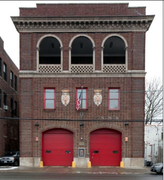







Firehouse historical landmark:
http://s-media.nyc.gov/agencies/lpc/lp/2527.pdf
Engine 268:







Ladder 137:





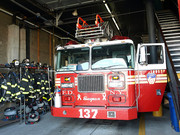




Engine 268/Ladder 137 videos:
https://www.youtube.com/watch?v=Hmw8uYzqouI
FDNY Ladder 137
FDNY Ladder 137
Ladder 137 Medals:
FF JOSEPH A. Q COURTNEY FF. LAD. 137 JUN. 20, 1950 1950 1951 CONRAN
FF CONRAD J. Q ROHE, JR. FF. LAD. 137 MAR. 24, 1965 1965 1966 DOUGHERTY

Engine 268/Ladder 137 LODDs:
FF Bertram Butler, Ladder 137, September 17, 1941, Heart attack while training in quarters

FF John Clarke, Engine 268, June 3, 1973
RIP. Never forget.
Rockaway fire history:
1892:

1916:

1922 Arverne Conflagration:
https://www.gendisasters.com/new-york/11781/arverne-ny-fire-jun-1922
1960 Hurricane Donna, September 12:
Hurricane Donna Hits The Rockaways
2001 American Airlines Fight 587 crash kills 265, November 12:
https://issuu.com/fdnyfoundation/docs/rockaway-plane-crash-kills-265--wnyf-
http://en.wikipedia.org/wiki/American_Airlines_Flight_587
http://stevespak.com/fires/queens/plane.html
2012 Hurricane Sandy, October 26-30:
FDNY removed the majority of its units from the Rockaway neighborhood because of extreme danger. Engine 268 and Ladder 137 remained.

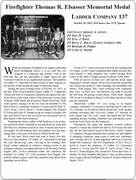
https://www.youtube.com/watch?v=A3wwP_7-E48
http://www.nyc.gov/html/fdny/html/events/2012/110812a.shtml
http://www.nydailynews.com/new-york/queens/rockaways-fire-fighters-work-24-hour-shifts-blaze-dangers-amplify-article-1.1199997
http://www.qchron.com/editions/queenswide/fdny-honors-boro-heroes-from-sandy/article_5ca55ab7-01cf-5a9e-b83d-10ef5e0217e2.html
Pre-FDNY volunteer era (note - Engine 268 organized in Atlantic Engine 1 firehouse when disbanded):
ATLANTIC ENGINE 1 196 Washington Ave. Mar. 1, 1887 to Sep. 1, 1905
SEASIDE ENGINE 1 Boulevard near Henry Feb. 5, 1895 Sep. 1, 1905
ATLANTIC HOSE 1 9 Grove St. Mar. 6, 1890 Sep. 1, 1905
SEASIDE HOSE 1 Boulevard near Henry Jan. 13, 1888 Sep. 1, 1905
VOLUNTEER HOSE 2 Boulevard near Eldert Oct. 2, 1887 Sep. 1, 1905
REMSEN HOSE & CHEMICAL 3 Boulevard near Pier Ave. Jan. 28, 1895 Sep. 1, 1905
OCEANUS LADDER 1 Boulevard & Bayview Ave. Dec. 30, 1882 Sep. 1, 1905
SAM MEYERS LADDER 2 Pier Ave. near Boulevard Mar. 20, 1897 Sep. 1, 1905


Engine 268/Ladder 137 new "drive-through" firehouse proposal:
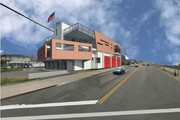
https://www.dnainfo.com/new-york/20170703/rockaway-park/rockaway-park-firehouse-beach-116th-fdny-flood-resilient
http://rockawaytimes.com/index.php/news/1075-fdny-banking-on-a-new-home-116th-firehouse-too-rich-to-rescue
https://www.dnainfo.com/new-york/20160620/rockaway-park/crumbling-rockaway-firehouse-may-be-cheaper-move-than-repair-officials
Rockaway Park neighborhood:
https://en.wikipedia.org/wiki/Rockaway_Park,_Queens
http://www.bridgeandtunnelclub.com/bigmap/queens/rockaways/beach116th/index.htm
Rockaway history:
http://en.wikipedia.org/wiki/Rockaway,_Queens



Engine 168 organized 111-02 Rockaway Beach Blvd in firehouse volunteer Atlantic Engine 1 1905
Engine 168 became Engine 268 1913
Engine 268 moved to new firehouse 259 Beach 116th St w/Ladder 137 1913
Engine 268 moved to 92-22 Rockaway Beach Blvd at Engine 266 2000
Engine 268 moved to 259 Beach 116th St 2000
Ladder 137 organized 259 Beach 116th St at Engine 268 1913
Bn 47 located at 259 Beach 116th St at Engine 268 2000
111-02 Rockaway Beach Blvd firehouse:

Note: Engine 286 was organized in 1905 as a combination engine and hose company with two officers, two engineers and eight firefighters. Ladder 137, when organized in 1913, probably would have had 2 officers and ten firefighters.
259 Beach 116th St firehouse "The Beach House":











Firehouse historical landmark:
http://s-media.nyc.gov/agencies/lpc/lp/2527.pdf
Engine 268:







Ladder 137:










Engine 268/Ladder 137 videos:
https://www.youtube.com/watch?v=Hmw8uYzqouI
FDNY Ladder 137
FDNY Ladder 137
Ladder 137 Medals:
FF JOSEPH A. Q COURTNEY FF. LAD. 137 JUN. 20, 1950 1950 1951 CONRAN
FF CONRAD J. Q ROHE, JR. FF. LAD. 137 MAR. 24, 1965 1965 1966 DOUGHERTY

Engine 268/Ladder 137 LODDs:
FF Bertram Butler, Ladder 137, September 17, 1941, Heart attack while training in quarters

FF John Clarke, Engine 268, June 3, 1973
RIP. Never forget.
Rockaway fire history:
1892:

1916:

1922 Arverne Conflagration:
https://www.gendisasters.com/new-york/11781/arverne-ny-fire-jun-1922
1960 Hurricane Donna, September 12:
Hurricane Donna Hits The Rockaways
2001 American Airlines Fight 587 crash kills 265, November 12:
https://issuu.com/fdnyfoundation/docs/rockaway-plane-crash-kills-265--wnyf-
http://en.wikipedia.org/wiki/American_Airlines_Flight_587
http://stevespak.com/fires/queens/plane.html
2012 Hurricane Sandy, October 26-30:
FDNY removed the majority of its units from the Rockaway neighborhood because of extreme danger. Engine 268 and Ladder 137 remained.


https://www.youtube.com/watch?v=A3wwP_7-E48
http://www.nyc.gov/html/fdny/html/events/2012/110812a.shtml
http://www.nydailynews.com/new-york/queens/rockaways-fire-fighters-work-24-hour-shifts-blaze-dangers-amplify-article-1.1199997
http://www.qchron.com/editions/queenswide/fdny-honors-boro-heroes-from-sandy/article_5ca55ab7-01cf-5a9e-b83d-10ef5e0217e2.html
Pre-FDNY volunteer era (note - Engine 268 organized in Atlantic Engine 1 firehouse when disbanded):
ATLANTIC ENGINE 1 196 Washington Ave. Mar. 1, 1887 to Sep. 1, 1905
SEASIDE ENGINE 1 Boulevard near Henry Feb. 5, 1895 Sep. 1, 1905
ATLANTIC HOSE 1 9 Grove St. Mar. 6, 1890 Sep. 1, 1905
SEASIDE HOSE 1 Boulevard near Henry Jan. 13, 1888 Sep. 1, 1905
VOLUNTEER HOSE 2 Boulevard near Eldert Oct. 2, 1887 Sep. 1, 1905
REMSEN HOSE & CHEMICAL 3 Boulevard near Pier Ave. Jan. 28, 1895 Sep. 1, 1905
OCEANUS LADDER 1 Boulevard & Bayview Ave. Dec. 30, 1882 Sep. 1, 1905
SAM MEYERS LADDER 2 Pier Ave. near Boulevard Mar. 20, 1897 Sep. 1, 1905


Engine 268/Ladder 137 new "drive-through" firehouse proposal:

https://www.dnainfo.com/new-york/20170703/rockaway-park/rockaway-park-firehouse-beach-116th-fdny-flood-resilient
http://rockawaytimes.com/index.php/news/1075-fdny-banking-on-a-new-home-116th-firehouse-too-rich-to-rescue
https://www.dnainfo.com/new-york/20160620/rockaway-park/crumbling-rockaway-firehouse-may-be-cheaper-move-than-repair-officials
Rockaway Park neighborhood:
https://en.wikipedia.org/wiki/Rockaway_Park,_Queens
http://www.bridgeandtunnelclub.com/bigmap/queens/rockaways/beach116th/index.htm
Rockaway history:
http://en.wikipedia.org/wiki/Rockaway,_Queens



mack said:Engine 268/Ladder 137 new "drive-through" firehouse proposal:
https://www.dnainfo.com/new-york/20170703/rockaway-park/rockaway-park-firehouse-beach-116th-fdny-flood-resilient
http://rockawaytimes.com/index.php/news/1075-fdny-banking-on-a-new-home-116th-firehouse-too-rich-to-rescue
https://www.dnainfo.com/new-york/20160620/rockaway-park/crumbling-rockaway-firehouse-may-be-cheaper-move-than-repair-officials
NYC is very different than most areas. This article presents some general pros/cons of drive-thru firehouses:
"Fire Apparatus Site" - "Do You Really Need A Drive-Through Station?" Don Collins 08/31/2016
"Drive-Through Pros:
There is less opportunity for an accident in a drive-through station if the driveway, apron, and entry portals are designed correctly and the driver and officer remain alert until the apparatus is in quarters and the motor has been shut down. I have heard it many times: ?There are a lot fewer accidents per mile going forward than there are accidents per mile going backward. This may be true, but I know of at least one accident in Virginia where the apparatus floor roof was collapsed by pulling an aerial into the station from the rear apron. It can happen if you neglect to retract the outriggers!
Drive-Through Cons:
It takes considerably more lot size to have a drive-through station. In the absence of a corner lot and side street, you will need enough room for a driveway connecting the street to the rear apron. The driveway must go down the right side of the station (right side being defined as viewed from the street). You will need an apron in the rear that is at least 80 percent of the length of the longest anticipated apparatus to be housed at the station in order to maneuver the apparatus into its bay such that it is parallel to the stall. The driveway will have to extend beyond the end of the apron before turning to the apron. All drives to the rear apron should be such that the driver is only making right turns. Only right turns afford the driver of a fire apparatus with the best vision of potential obstructions. The radius connecting the left side of the driveway to the left side of the apron should be at lease 25 feet in length. On a recent project in Ohio, the rear driveway alone added $125,000 to the project cost. That is money that could have gone into improving the quality of the station.
You will also need a driveway on the other (or left) side of the station as an ?alarm? bypass. If an alarm is transmitted for your apparatus while you are on the driveway or apron returning to quarters, you do not want to drive through the station in responding. Doing so might jeopardize the safety of firefighters from a second piece of equipment as they cross the apparatus floor heading to their seat assignment. The bypass drive can also serve as a staging area for ?visiting? apparatus during joint training events. Having a rear apron does not negate the need for a front apron long enough to accommodate the longest apparatus to be housed in the station. You still may have a need to stage an apparatus on the front apron.
Most stations designed as a drive-through that I have visited no longer function as such. The back of the stall has become the parking spot for another active company or medic unit, or a reserve apparatus, or rescue boat, or equipment trailer, or some other equipment needing to be sheltered that does not even belong to the fire department.
It does not have to be equipment with wheels to negate a drive-through setup. The space behind an apparatus often becomes the storage spot for all that other ?stuff? we seem to collect without having the slightest idea of where it is to be stored?everything from portable grills to training props.
Drive-through stations need a service hydrant at the rear apron. But, knowing that there are times when it will not function as a drive-through, consider putting a second hydrant on the front apron. Drive-through stations need hose bibs on the exterior at all four corners of the apparatus floor to ensure convenient access for a garden hose hookup to wash down apparatus after a run.
In visiting stations I have yet to witness an apparatus return to the station via the rear apron, stop and discharge a firefighter for the sole purpose of making the exhaust hookup before entering the station. The exhaust hookup has always been completed after the apparatus has stopped at the ?staged? position. Maybe it is because the hookup has been left dangling at the far end of the station. Not hooking up the exhaust negates the purpose of having the exhaust 50 percent of the time. On the other hand, I have witnessed a back-in station where the apparatus stopped short of the door, discharged a firefighter who retrieved the hookup dangling just inside the door placing it on the exhaust pipe before backing into the station was resumed. Maybe we need the manufacturers to provide hookups that automatically track to the rear of the station once that have disengaged from the apparatus.
Drive-through stations require interior bollards at the front bay doors.
All the surface area dedicated to apparatus movement required for a drive-through station compounds the issue of storm water runoff detention.
Drive-through stations require twice as many apparatus bay doors. Maintenance issues are potentially doubled. Twice as many doors means twice the opportunity for air loss and a corresponding increase in apparatus floor heating cost.
Selecting a drive-through configuration means the loss of the back wall as a place for storage cabinet, racks, etc. and the possible location of some of the apparatus floor support rooms. This will compound getting all the support spaces you need along the two side walls.
If you must have a drive-through station, strongly consider picking a site that will allow the apparatus floor to be turned parallel the street. This will cut down on the amount of pavement required to get the apparatus in and out of the station. Drive-through stations with the apparatus floor turned to be parallel the street have been constructed in Carrboro, North Carolina, and Columbus, Indiana, among other places."
- Joined
- May 6, 2010
- Messages
- 17,443
Mack Thanks as always for your diligent history posts...in regard to this photo from reply 1800 above i remember my Father telling me about when certain Pumpers responded to the Island they had to unbolt the front bumper to fit on the elevator.... https://postimg.cc/image/hfphe20eh/
- Status
- Not open for further replies.
